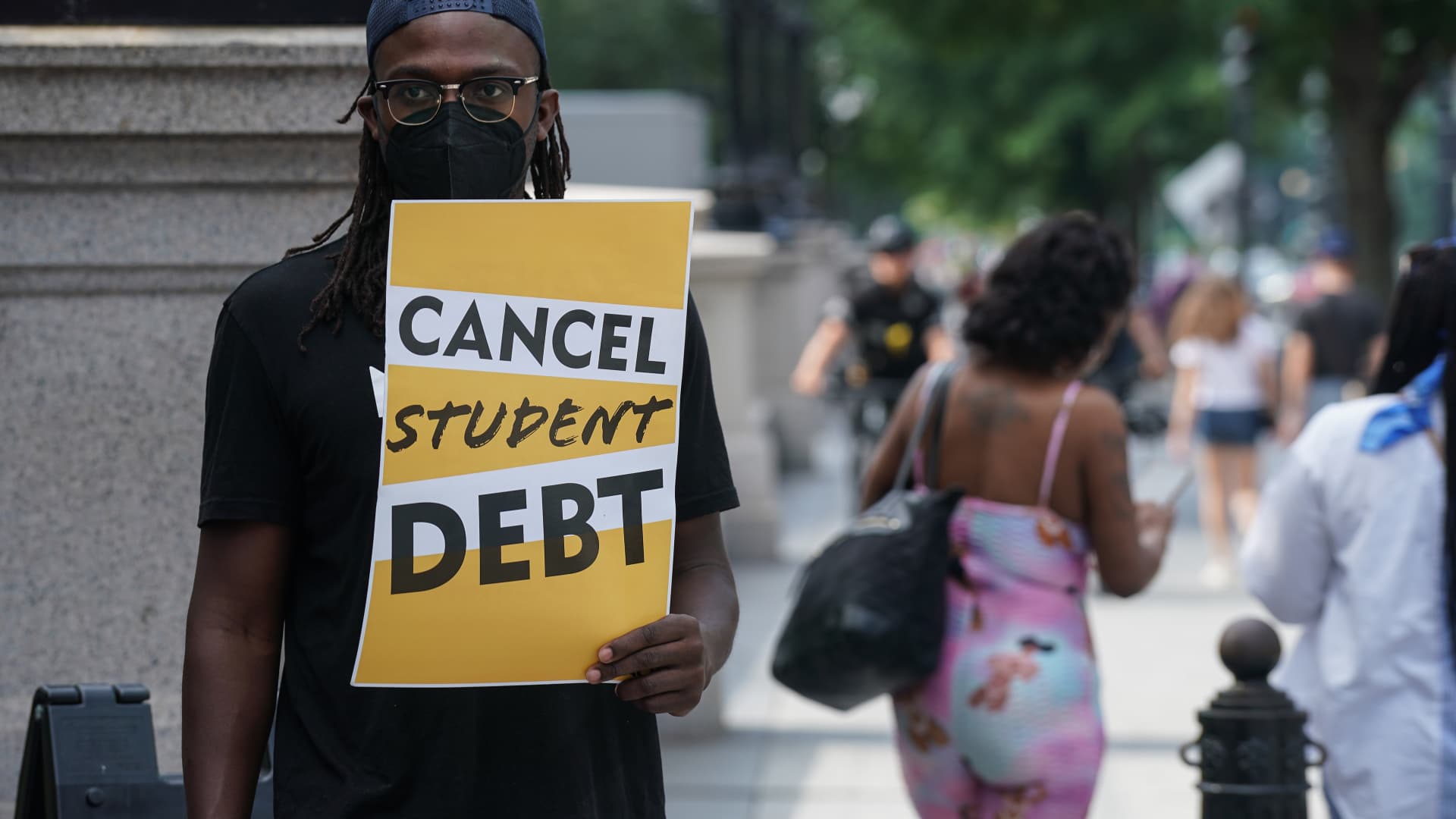
A number of big changes are coming for borrowers pursuing public service loan forgiveness.
That program, signed into law by then-President George W. Bush in 2007, allows nonprofit and government employees to have their federal student loans canceled after 10 years, or 120 payments.
The Consumer Financial Protection Bureau estimates that 25% of American workers could be eligible.
However, the program has been plagued by problems, making people who actually get the relief a rarity.
Borrowers often believe they’re paying their way to loan cancellation only to discover at some point in the process that they don’t qualify, usually for technical and confusing reasons. Servicers have been blamed for misleading borrowers and botching their timelines.
Some of the upcoming changes aim to improve these problems. Here’s what borrowers should expect.
1. Payments will eventually resume
Most federal student loan borrowers have been able to pause their monthly bills since March 2020, thanks to a pandemic-era relief policy.
Currently, those payments are expected to turn back in September, although some experts are expecting that the Biden administration will delay the restart date for more months.
Still, as the country pulls out of the pandemic, experts say borrowers should be prepared for life with a student loan bill again. In the meantime, any months during the pause count toward your qualifying payments.
2. You’ll get a new servicer: MOHELA
Until recently, borrowers pursuing public service loan forgiveness have had their accounts handled by the Pennsylvania Higher Education Assistance Agency, also known as FedLoan. But FedLoan, which handled the loans of 8.5 million student borrowers, announced last year that it would not renew its contract with the federal government.
As a result, your new servicer will be MOHELA, or the Missouri Higher Education Loan Authority.
“While the name of your servicer is changing, nearly every part of your post-transition experience will remain the same,” said Scott Buchanan, executive director of the Student Loan Servicing Alliance, a trade group for federal student loan servicers.
The transition is already occurring, Buchanan said: “Some borrowers have already moved to their new servicer and others are in process in the coming months. We are conducting this transition in waves to minimize any consumer issues.”
Borrowers should be sure to read all letters and emails from their servicer, Buchanan said.
More from Personal Finance:
Reconciliation bill includes about $80 billion for the IRS
Inflation Reduction Act aims to trim insulin costs for Medicare users
IRS ‘absolutely’ will not increase audit scrutiny on middle-income earners
Expect to have to set a new password to login into your new account and to update your banking details, and perhaps your debit card information, if you’re enrolled in automatic payments and when the bills resume.
Since so many borrowers pursuing public service loan forgiveness complain that their number of qualifying payments have been undercounted, you’ll want to make sure MOHELA has your correct payment count, said higher education expert Mark Kantrowitz.
If there’s a discrepancy, communicate that to your servicer as soon as possible.
3. New regulations on qualifying payment counts
The Biden administration announced in July that it was moving to make it easier for public servants to get debt forgiveness. After a public comment period, the final rules will go into effect no later than July 1, 2023.
By then, public servants will likely be able to get their payments counted during any deferments or forbearances. Currently, these periods don’t qualify.
Late payments would also no longer be excluded from a borrowers’ total qualifying payments.
For now, experts recommend staying in the loop about the status of the changes and requesting for any previously disqualified payments to be counted when the opportunity becomes available.
4. Deadline for a second chance at relief
Borrowers pursuing the debt cancellation for public servants have been given the chance to get their timelines recounted if they were disqualified because of their type of loan or repayment plan. But that limited waiver could expire at the end of October.
As a result, borrowers should act now if they haven’t already, Kantrowitz said.
If you have either a Federal Family Education Loan (FFEL) or a Federal Perkins Loan, which don’t normally count for public service loan forgiveness but now temporarily do, you’ll need to consolidate those into direct loans with your servicer.
Certain periods spent in deferment or forbearance may now count.
Experts recommend applying for the relief even if you’re unsure if your previous payments will qualify under the new rules.
5. Broader forgiveness, which may have little impact
The White House is currently mulling over how to proceed with student loan forgiveness, and a decision is expected this month.
Yet loan forgiveness should not have much of an impact on borrowers who are pursuing public service loan forgiveness, Kantrowitz said, unless their balance is entirely cleared.
That’s because most borrowers pursuing PSLF are enrolled in an income-driven repayment plan, with their monthly bill calculated as a share of their earnings. That payment, as a result, shouldn’t change from debt cancellation.
“When your loans will be forgiven anyway, forgiving part of them sooner doesn’t change anything, with a few small exceptions,” Kantrowitz said.
More from Personal Finance:
Reconciliation bill includes about $80 billion for the IRS
Inflation Reduction Act aims to trim insulin costs for Medicare users
IRS ‘absolutely’ will not increase audit scrutiny on middle-income earners




